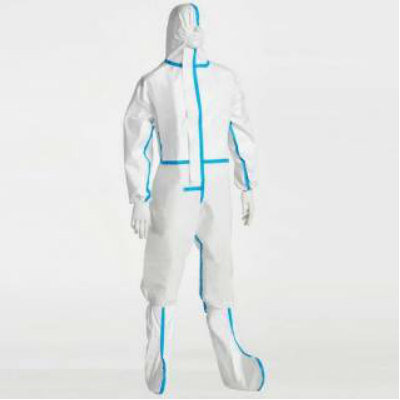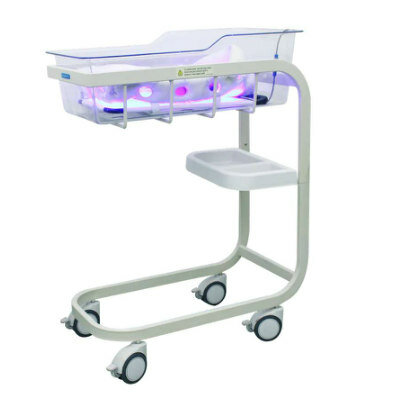Laser Shoes Alleviate Gait Freezing in Parkinson’s Disease
|
By HospiMedica International staff writers Posted on 04 Jan 2018 |

Image: Research suggests laser shoes can help PD patients walk safer (Photo courtesy University of Twente).
Innovative shoes with laser pointers project a line on the floor to the rhythm of the footsteps, helping trigger Parkinson’s disease (PD) patients to walk.
Researchers at the University of Twente (UT; Enschede, The Netherlands) and Radboud University Medical Centre (Nijmegen, the Netherlands) conducted a study to test the new ambulatory visual cueing device on 21 patients with PD and freezing of gait (FOG) in a controlled laboratory. The researchers measured the number of FOG episodes and the percent time frozen occurring during a standardized walking protocol. Participants performed 10 trials with the shoes turned off and 10 trials with cueing. FOG was assessed using offline video analysis by an independent rater.
The results showed that cueing using the laser shoes was associated with a significant reduction in the number of FOG episodes, both with (45.9%) and without (37.7%) medication. Moreover, the laser shoes reduced the percent of time spent frozen by 56.5% when the patients were off medication; reduction while taking medication was slightly smaller (51.4%). While the effects mirrored the patients' subjective experience on the laser shoes' efficacy, there were no clinically meaningful changes in gait measures. The study was published on December 20, 2017, in Neurology.
“Our tests were administered in a controlled lab setting with and without medication. Of the 19 patients who tested the shoes, the majority would be happy to use them. The patients did not seem to mind that the laser was activated for each single step,” said senior author neuroscientist Murielle Ferraye, PhD, who developed the shoes. “Ideally, the laser should only be activated once the blockage is detected, but we're not quite there yet; freezing is a very complex phenomenon.”
Walking problems are common and very disabling in Parkinson’s disease; in particular, FOG is a severe symptom which generally develops in more advanced stages. It can last seconds to minutes, and is generally triggered by the stress of an unfamiliar environment or when medication wears off. Because the foot remains glued to the floor but the upper body continues moving forward, it can cause the person to lose balance and fall.
But PD patients also experience a unique phenomenon; by consciously looking at objects on the floor--such as the lines from a zebra crossing--and stepping over them, they are able to overcome FOG. With the laser shoes, these useful visual cues can be continuously applied in everyday life to walk better and safer. The principle behind the laser shoes is simple: upon foot contact, the left shoe projects a line on the floor in front of the right foot. The patient steps over or towards the line, which activates the laser on the right shoe, and so on (see video).
Related Links:
University of Twente
Radboud University Medical Centre
Researchers at the University of Twente (UT; Enschede, The Netherlands) and Radboud University Medical Centre (Nijmegen, the Netherlands) conducted a study to test the new ambulatory visual cueing device on 21 patients with PD and freezing of gait (FOG) in a controlled laboratory. The researchers measured the number of FOG episodes and the percent time frozen occurring during a standardized walking protocol. Participants performed 10 trials with the shoes turned off and 10 trials with cueing. FOG was assessed using offline video analysis by an independent rater.
The results showed that cueing using the laser shoes was associated with a significant reduction in the number of FOG episodes, both with (45.9%) and without (37.7%) medication. Moreover, the laser shoes reduced the percent of time spent frozen by 56.5% when the patients were off medication; reduction while taking medication was slightly smaller (51.4%). While the effects mirrored the patients' subjective experience on the laser shoes' efficacy, there were no clinically meaningful changes in gait measures. The study was published on December 20, 2017, in Neurology.
“Our tests were administered in a controlled lab setting with and without medication. Of the 19 patients who tested the shoes, the majority would be happy to use them. The patients did not seem to mind that the laser was activated for each single step,” said senior author neuroscientist Murielle Ferraye, PhD, who developed the shoes. “Ideally, the laser should only be activated once the blockage is detected, but we're not quite there yet; freezing is a very complex phenomenon.”
Walking problems are common and very disabling in Parkinson’s disease; in particular, FOG is a severe symptom which generally develops in more advanced stages. It can last seconds to minutes, and is generally triggered by the stress of an unfamiliar environment or when medication wears off. Because the foot remains glued to the floor but the upper body continues moving forward, it can cause the person to lose balance and fall.
But PD patients also experience a unique phenomenon; by consciously looking at objects on the floor--such as the lines from a zebra crossing--and stepping over them, they are able to overcome FOG. With the laser shoes, these useful visual cues can be continuously applied in everyday life to walk better and safer. The principle behind the laser shoes is simple: upon foot contact, the left shoe projects a line on the floor in front of the right foot. The patient steps over or towards the line, which activates the laser on the right shoe, and so on (see video).
Related Links:
University of Twente
Radboud University Medical Centre
Latest Patient Care News
- Surgical Capacity Optimization Solution Helps Hospitals Boost OR Utilization

- Game-Changing Innovation in Surgical Instrument Sterilization Significantly Improves OR Throughput
- Next Gen ICU Bed to Help Address Complex Critical Care Needs
- Groundbreaking AI-Powered UV-C Disinfection Technology Redefines Infection Control Landscape
- Clean Hospitals Can Reduce Antibiotic Resistance, Save Lives
- Smart Hospital Beds Improve Accuracy of Medical Diagnosis
- New Fast Endoscope Drying System Improves Productivity and Traceability
- World’s First Automated Endoscope Cleaner Fights Antimicrobial Resistance
- Portable High-Capacity Digital Stretcher Scales Provide Precision Weighing for Patients in ER
- Portable Clinical Scale with Remote Indicator Allows for Flexible Patient Weighing Use
- Innovative and Highly Customizable Medical Carts Offer Unlimited Configuration Possibilities
- Biomolecular Wound Healing Film Adheres to Sensitive Tissue and Releases Active Ingredients
- Wearable Health Tech Could Measure Gases Released From Skin to Monitor Metabolic Diseases
- Wearable Cardioverter Defibrillator System Protects Patients at Risk of Sudden Cardiac Arrest
- World's First AI-Ready Infrasound Stethoscope Listens to Bodily Sounds Not Audible to Human Ear
- POC Diagnostic Platform Offers Handheld, Instrument-Free PCR Testing for STIs
Channels
Artificial Intelligence
view channel
AI-Powered Algorithm to Revolutionize Detection of Atrial Fibrillation
Atrial fibrillation (AFib), a condition characterized by an irregular and often rapid heart rate, is linked to increased risks of stroke and heart failure. This is because the irregular heartbeat in AFib... Read more
AI Diagnostic Tool Accurately Detects Valvular Disorders Often Missed by Doctors
Doctors generally use stethoscopes to listen for the characteristic lub-dub sounds made by heart valves opening and closing. They also listen for less prominent sounds that indicate problems with these valves.... Read moreCritical Care
view channel
Deep-Learning Model Predicts Arrhythmia 30 Minutes before Onset
Atrial fibrillation, the most common type of cardiac arrhythmia worldwide, affected approximately 59 million people in 2019. Characterized by an irregular and often rapid heart rate, atrial fibrillation... Read more
Breakthrough Technology Combines Detection and Treatment of Nerve-Related Disorders in Single Procedure
The peripheral nervous system (PNS) serves as the communication network that links the brain and spinal cord to every other part of the body. It consists of two parts: the somatic nervous system, which... Read moreSurgical Techniques
view channel
Hydrogel-Based Miniaturized Electric Generators to Power Biomedical Devices
The development of engineered devices that can harvest and convert the mechanical motion of the human body into electricity is essential for powering bioelectronic devices. This mechanoelectrical energy... Read moreWearable Technology Monitors and Analyzes Surgeons' Posture during Long Surgical Procedures
The physical strain associated with the static postures maintained by neurosurgeons during long operations can lead to fatigue and musculoskeletal problems. An objective assessment of surgical ergonomics... Read more.jpg)
Custom 3D-Printed Orthopedic Implants Transform Joint Replacement Surgery
The evolving field of 3D printing is revolutionizing orthopedics, especially for individuals requiring joint replacement surgeries where traditional implants fail to provide a solution. Although most people... Read more
Cutting-Edge Imaging Platform Detects Residual Breast Cancer Missed During Lumpectomy Surgery
Breast cancer is becoming increasingly common, with statistics indicating that 1 in 8 women will develop the disease in their lifetime. Lumpectomy remains the predominant surgical intervention for treating... Read moreHealth IT
view channel
Machine Learning Model Improves Mortality Risk Prediction for Cardiac Surgery Patients
Machine learning algorithms have been deployed to create predictive models in various medical fields, with some demonstrating improved outcomes compared to their standard-of-care counterparts.... Read more
Strategic Collaboration to Develop and Integrate Generative AI into Healthcare
Top industry experts have underscored the immediate requirement for healthcare systems and hospitals to respond to severe cost and margin pressures. Close to half of U.S. hospitals ended 2022 in the red... Read more
AI-Enabled Operating Rooms Solution Helps Hospitals Maximize Utilization and Unlock Capacity
For healthcare organizations, optimizing operating room (OR) utilization during prime time hours is a complex challenge. Surgeons and clinics face difficulties in finding available slots for booking cases,... Read more
AI Predicts Pancreatic Cancer Three Years before Diagnosis from Patients’ Medical Records
Screening for common cancers like breast, cervix, and prostate cancer relies on relatively simple and highly effective techniques, such as mammograms, Pap smears, and blood tests. These methods have revolutionized... Read morePoint of Care
view channel
Critical Bleeding Management System to Help Hospitals Further Standardize Viscoelastic Testing
Surgical procedures are often accompanied by significant blood loss and the subsequent high likelihood of the need for allogeneic blood transfusions. These transfusions, while critical, are linked to various... Read more
Point of Care HIV Test Enables Early Infection Diagnosis for Infants
Early diagnosis and initiation of treatment are crucial for the survival of infants infected with HIV (human immunodeficiency virus). Without treatment, approximately 50% of infants who acquire HIV during... Read more
Whole Blood Rapid Test Aids Assessment of Concussion at Patient's Bedside
In the United States annually, approximately five million individuals seek emergency department care for traumatic brain injuries (TBIs), yet over half of those suspecting a concussion may never get it checked.... Read more
New Generation Glucose Hospital Meter System Ensures Accurate, Interference-Free and Safe Use
A new generation glucose hospital meter system now comes with several features that make hospital glucose testing easier and more secure while continuing to offer accuracy, freedom from interference, and... Read moreBusiness
view channel
Johnson & Johnson Acquires Cardiovascular Medical Device Company Shockwave Medical
Johnson & Johnson (New Brunswick, N.J., USA) and Shockwave Medical (Santa Clara, CA, USA) have entered into a definitive agreement under which Johnson & Johnson will acquire all of Shockwave’s... Read more
















